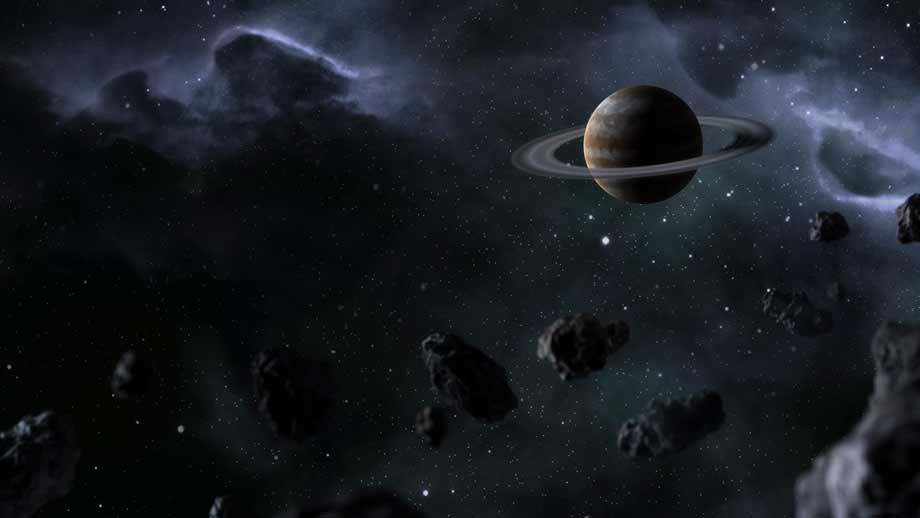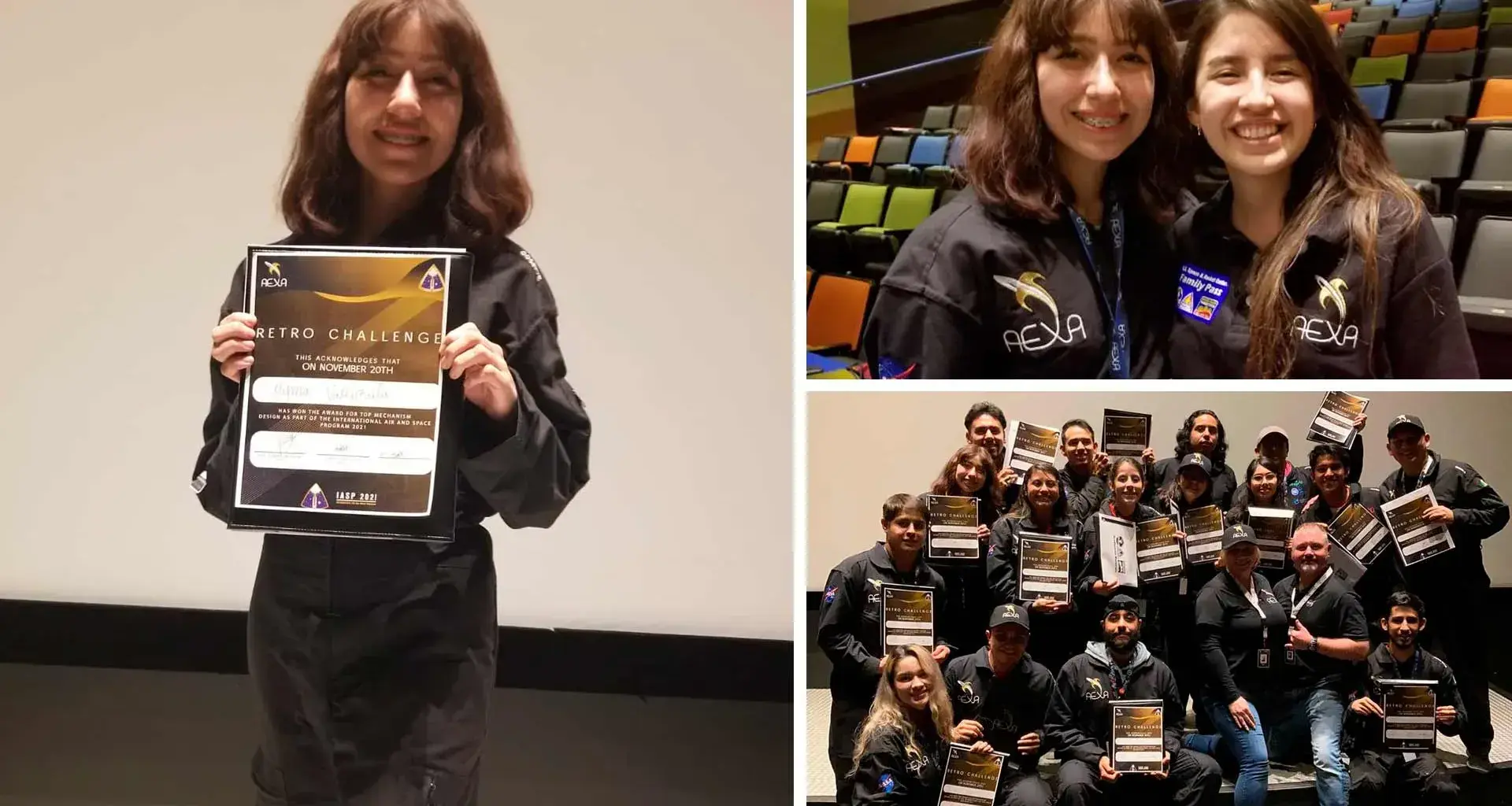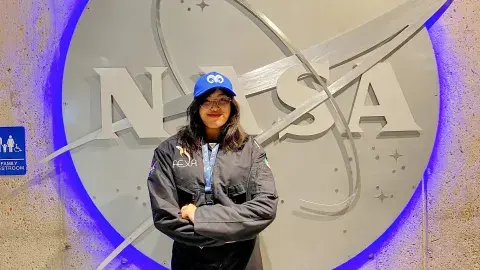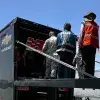Cosette Valenzuela, an engineering student from the Tec’s North Sonora Campus, is on the winning team of the 2021 AEXA International Air and Space Program, whose project will be tested in outer space.
The JPL (Jet Propulsion Laboratory) team that Cosette is on won thanks to its Úurich compliant mechanism project.
This project will be tested by NASA on March 14, 2023, at the International Space Station.
A compliant mechanism is a flexible instrument that achieves force and motion transmission through elastic body deformation.
The International Air and Space Program selects 60 international students to visit NASA facilities and the Space Rocket Center in Huntsville, Alabama.

Úurich: a space project
“Our project is a mechanism made of materials that can be subjected to space conditions and we’ve called it Úurich, which means ‘small land snail’ in the Maya language,” explained Cosette.
Cosette said that the project came up with the solution of a 2D (two-dimensional) design, since it had to be adapted to the MISSE (Materials International Space Station Experiment) module in order to be tested.
“We’ll take the project to the International Space Station for testing over 6 months in March 2023.” - Cosette Valenzuela.
“We thought of some shapes that could work in 2D, such as the wheel rim of a car. And that’s how we came up with the idea of the shape of a snail,” she added.
One of the greatest challenges for Cosette and her team was the variety of changes in mechanism materials and designs:
“We then had to carry out finite element simulations to detect flaws in the project. It really was a lot of hard work, but with the help of everyone on the team, we managed it.”
The engineering student, together with her team, was selected as one of the challenge’s 3 winners in the Best Mechanism category.
What’s next for NASA’s “snail”
“We’ll take the project to the International Space Station for testing over 6 months in March 2023,” added Cosette.
Cosette explained that they will be receiving monthly updates from the station to find out about Úurich’s behavior.
“We’ll continue to be in contact with NASA for project improvements and for its physical implementation. Once it’s launched, we’ll look at the behavior of the mechanism in space over a certain period of time,” concluded the student.
José Manuel Nieto, Director of the Mechatronics Engineering program at the North Sonora campus, explained that involving students in space programs is very positive for their education:
“It gives them opportunities to fulfill their potential by contributing to advances in science, technology, aeronautics, and space exploration to improve knowledge, education, economic vitality, and caring for Earth.”
ALSO READ:






